Cheap shots: the best second-hand DSLRs for beginners
Looking for a camera bargain? These are the DSLRs to look out for
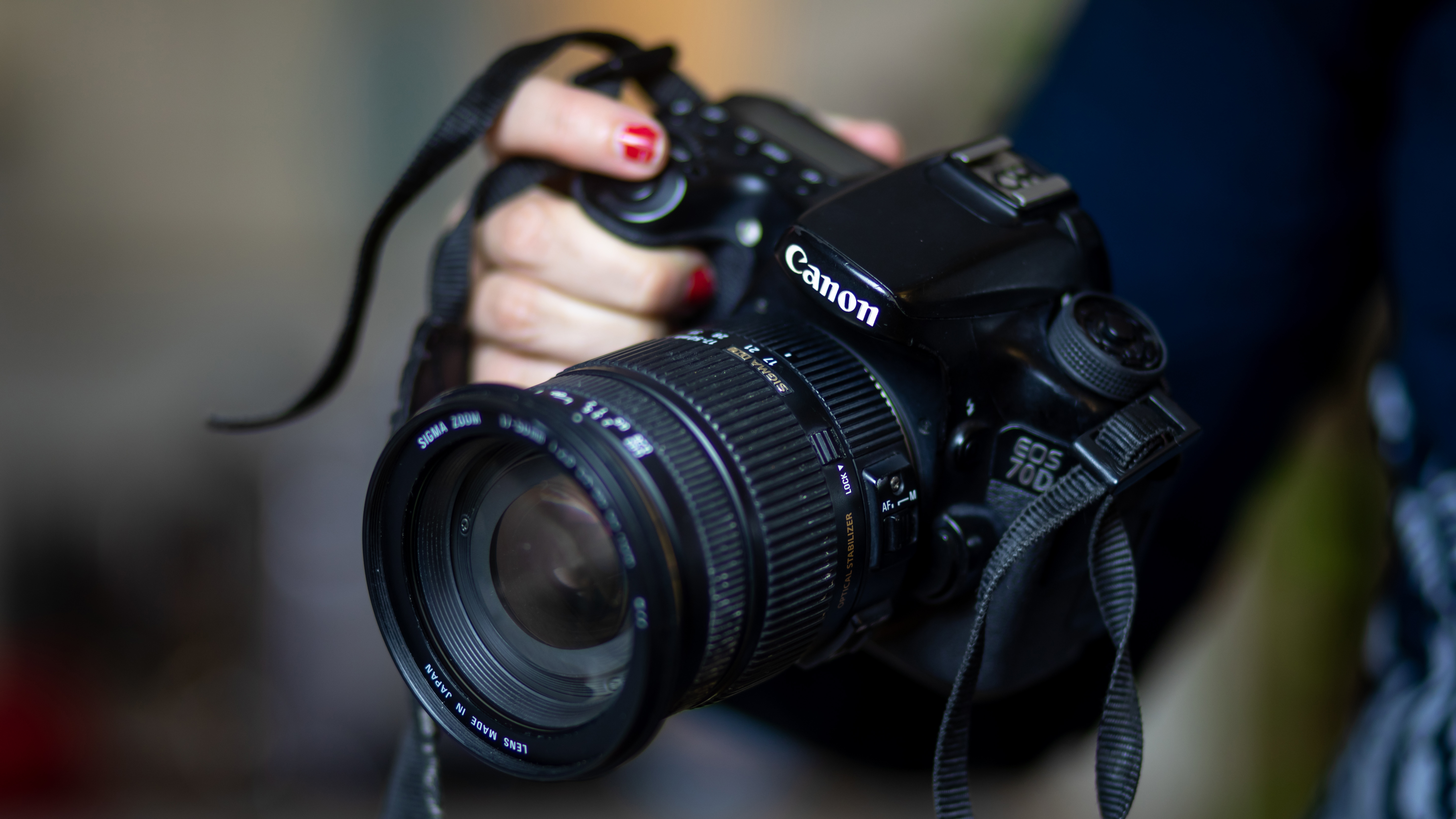
As camera companies slowly phase out their DSLR cameras in favor of lighter, flashier, mirrorless models, those of us who can’t afford the latest tech are increasingly turning to the second-hand market to save money.
And a very good idea it is, too. While DSLRs lack many of the more intelligent features seen on today's mirrorless cameras, the best beginner DSLRs still have a proven track record and excellent imaging quality – and buying them second-hand allows new photographers to level up their photography skills on a budget.
Due to the camera market shifting towards mirrorless, DSLRs are becoming an increasingly cost-effective option for those that want to take high-quality photos and videos without emptying the bank.
Why are DSLRs particularly good value? They have a slightly simpler operation due their optical (rather than electronic) viewfinders. In some cases, they also have a less sophisticated autofocusing system due to their age. But DSLRs also usually have superior battery lives, because the camera doesn’t have to power that electronic viewfinder or a rear live-view one to the same extent.
If you’d rather get a brand new DSLR, check out our roundup of the best DSLR cameras. Newcomers might also want to check out our guide to the best camera for beginners, too. But if it's a second-hand DSLR bargain you're after, this is the place for you. We'll start with some handy tips for buying a used camera, but if you just want to skip to our recommendations, use our menu bar on the left to jump straight to our price-ordered list (starting with the cheapest first, of course).
Buying a second-hand DSLR: quick tips
1. Check the shutter count
Just as you would look for the mileage on a pre-owned car, so too should you check the shutter count of second-hand DSLRs. Every camera has an approximate lifetime that can be measured in shutter counts. Each shutter count (aka actuation) is a photo that has been taken with the camera. Why is shutter count important? The more a camera has been used, the higher the shutter count and therefore the greater wear and tear on the camera.
Sign up for breaking news, reviews, opinion, top tech deals, and more.
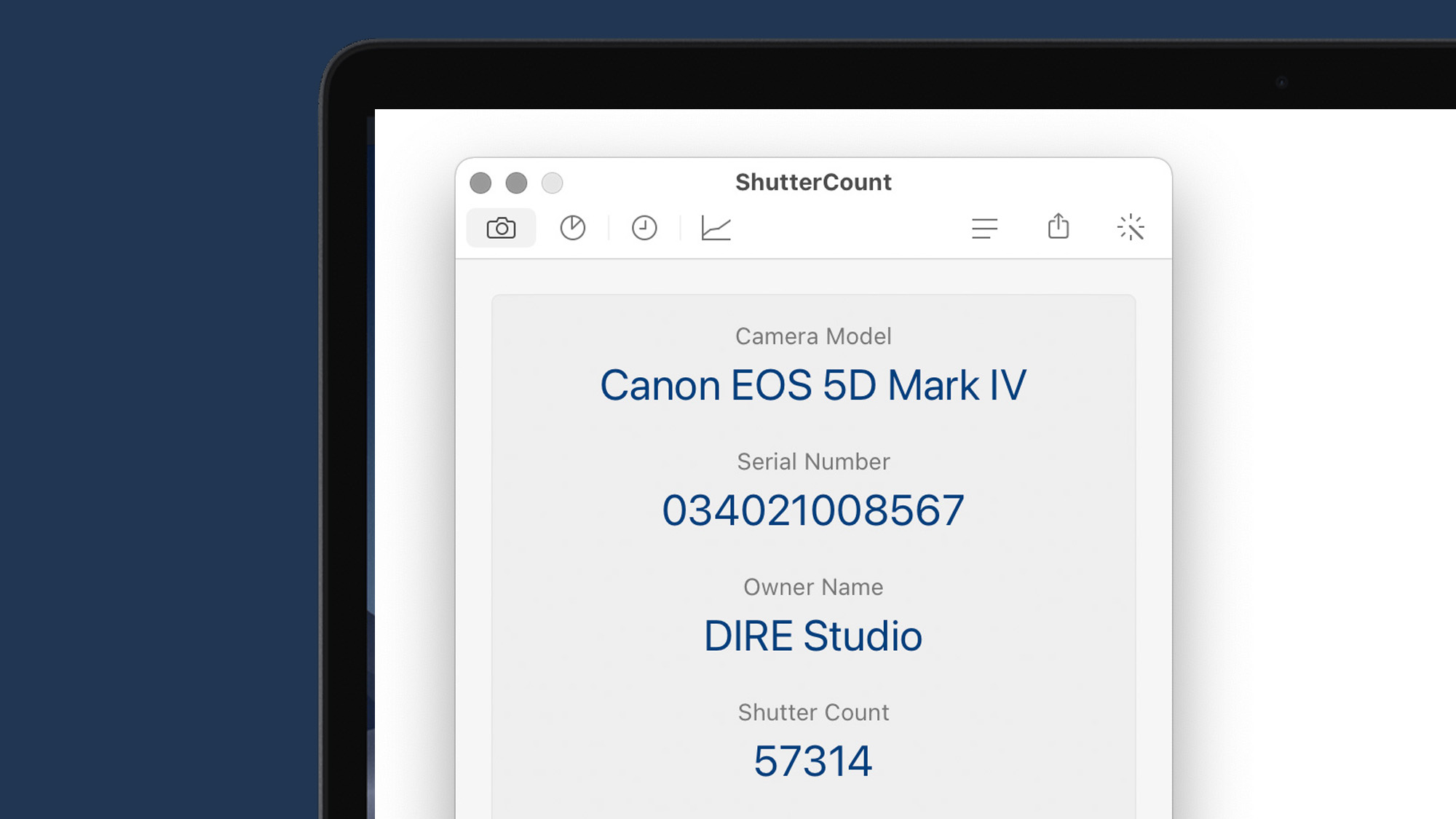
Generally, most DSLRs top-out around 150,000 to 300,000 shutter actuations (photos) with entry-level cameras towards the lower end and high-end professional models designed to last longer to keep up with the jobbing photographer. After this limit it’s more likely that something may go wrong in the camera and you’ll be footing the bill for a costly repair or serious overhaul which may cost more than buying a new camera. You can find a camera's shutter count in the EXIF data of its photos –take a photo and then upload it to a site like Myshuttercount or, for wider compatibility, an app like ShutterCount.
2. Look out for original packaging
There’s some merit to looking for a pre-owned DSLR with its original packaging. Firstly, a DSLR with the original box, instruction manual, and any accessories it originally shipped with suggests that it's had a careful owner. This might mean the camera itself is much less likely to break down during your ownership. Also, not having to buy all those accessories separately will save a little money and time, too.
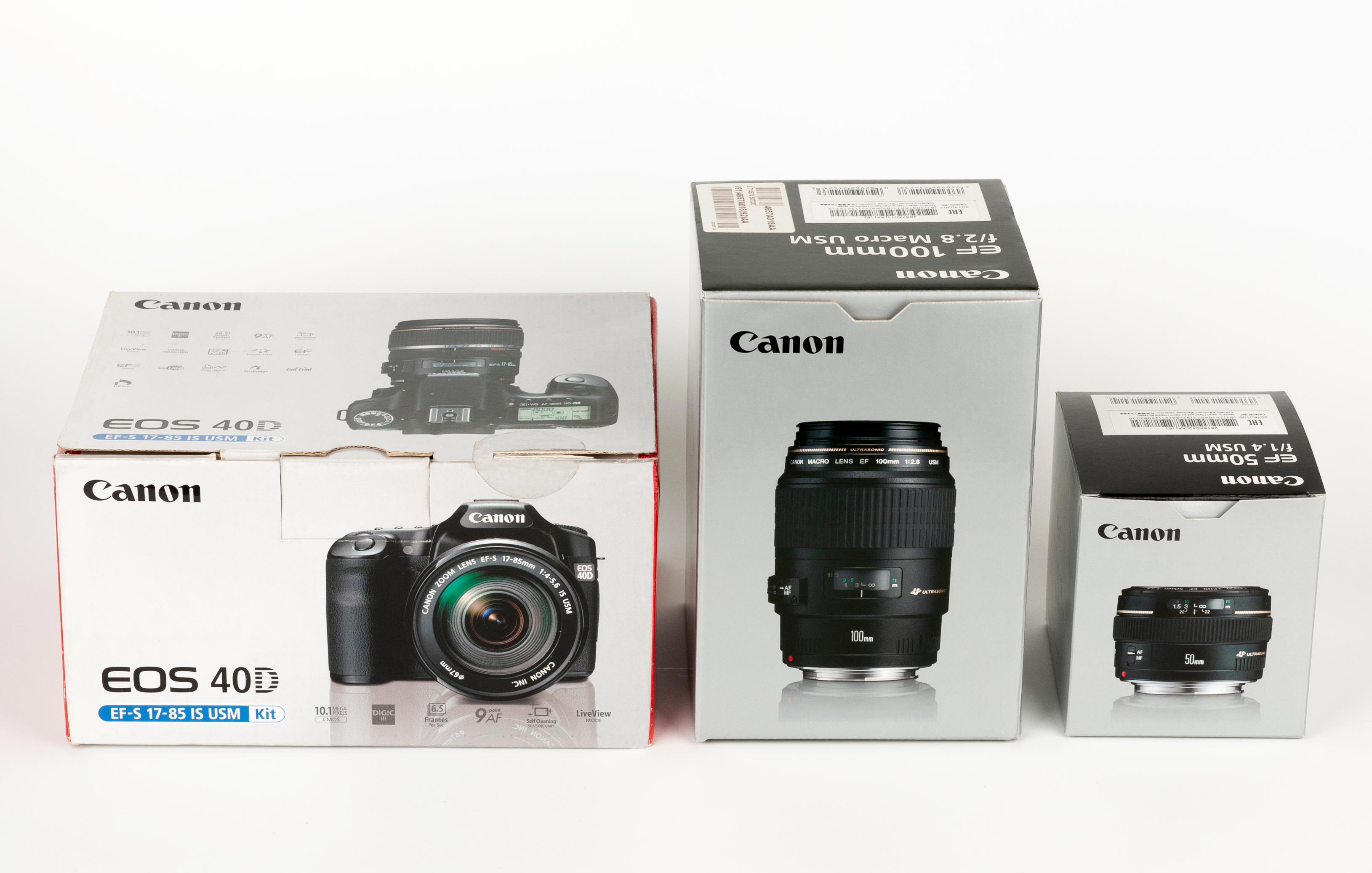
However, the main reason for looking out for original packaging is to check that it was distributed by reputable channels when it was first sold. Cameras brought into any given region from outside of that market are generally considered ‘grey imports’.
This is imported stock that, while much more competitively priced than other comparable models, may have no warranty and little to no support available if things go wrong. Some camera servicing centers may outright refuse to service your camera. So above all, look for a camera that has the original packaging and paperwork to see if it’s a legitimate product or a grey import.
3. Choose a reputable dealer
Have a quick look online at second-hand DSLR sales and you'll soon see that cameras sold by private individuals are a little cheaper than dealers who buy and sell kit. So why is there a difference, and should you care?
Well, the old adages ‘buyer beware’ and ‘sold as seen’ apply more to the former in this regard because private sellers (depending on your country and region) have to jump through far fewer hoops to shift their cameras. That means if you’re on your way home from collecting a new camera and it breaks, there’s almost nothing you can do about it from a legal standpoint.

Dealers, on the other hand, often give out limited warranties with their second-hand camera sales. They also clean the cameras when they come in, give them a small service to check they’re in full working order, and check for errors or glitches. So if something goes wrong, you’re more likely to be able to either take it back, ask for a repair, or get some support on the phone or via email if the worst should happen.
Consider dealers such as MPB (above), Adorama, BHPhoto, and if you’re buying from a dealer on eBay be sure to check out how long they’ve been trading and their feedback history.
4. Consider lens ranges
When buying a used DSLR it’s easy to get swept up in the excitement of finding the best possible camera body without putting much thought into lens choice. But lenses are often far more important than the camera body itself because they offer up a whole range of different shooting possibilities.
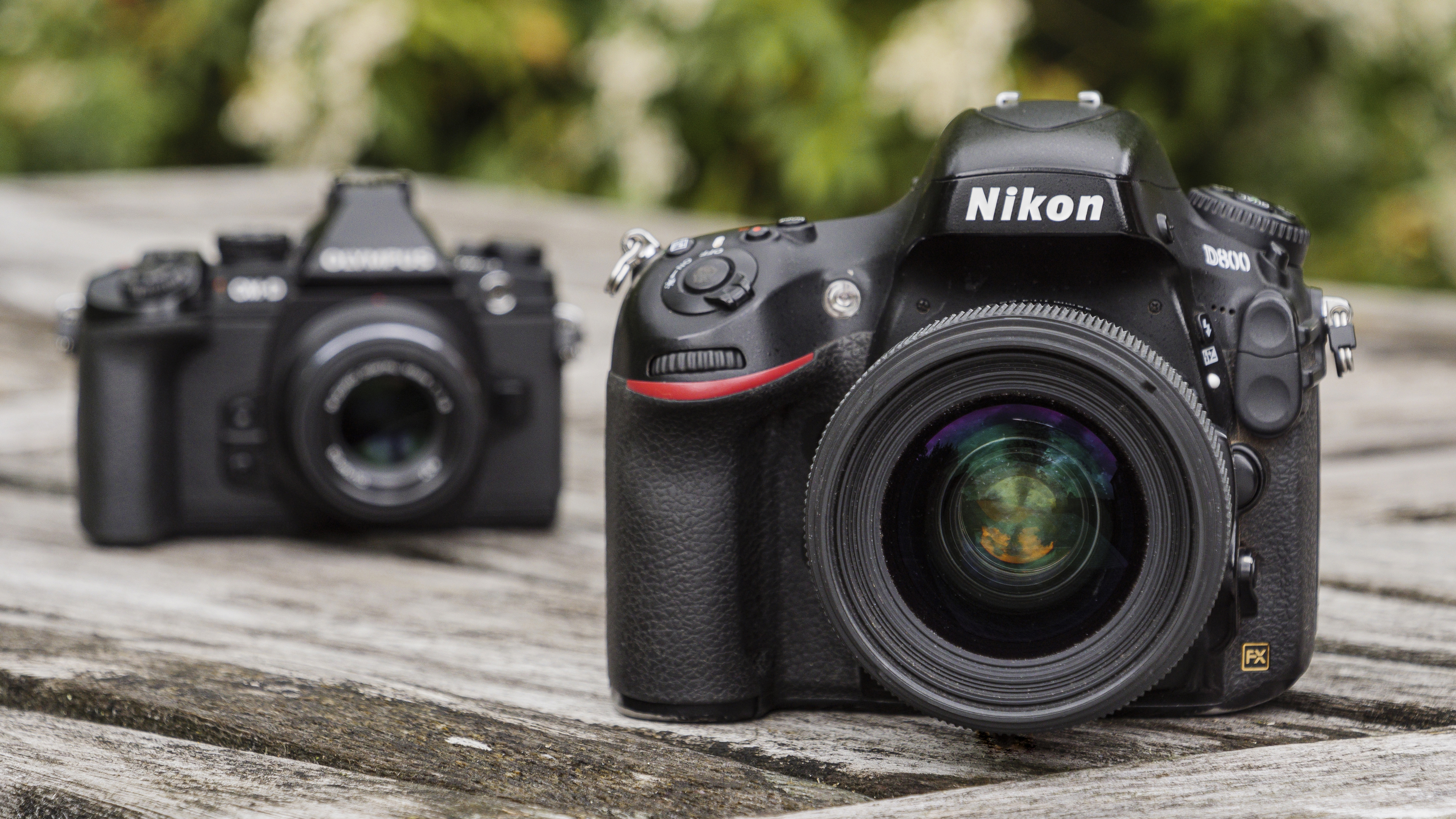
If you’re thinking of going for that APS-C crop sensor body and you want to shoot astrophotography, check to see if that model is compatible with any ultra-wide lenses with fast maximum apertures. Want to get into sports? You’ll likely need a camera that’s compatible with the longer, professional telephoto lenses.
Older DSLRs may also not be compatible with more modern lenses and vise versa. Even if a lens ‘works’ with your chosen camera, certain features like exposure control, autofocusing and image stabilization may still be incompatible, so check the lens range for that camera before buying.
5. Play it safe with the big names
Sure, we get it, the reason why you’re buying second-hand is likely to save a good chunk of change compared with new models. But don’t fall into the trap of buying third-party brands that seem to offer everything the main brands do, but at a fraction of the cost.

This difference in price can be seen in the quality of manufacturing and longevity of cameras. Instead, aim for reputable manufacturers like Canon, Nikon, Fujifilm, Sony, and more. They have a proven track record of producing high-quality DSLRs of exceptional build quality, so you’re more likely to be satisfied for longer. All you'll need to get started is a kit lens and one of the best SD cards.
The best second-hand DSLRs for beginners
Nikon D3500 (2018)
- Typical second-hand price ($490 / £350 / AU$680)
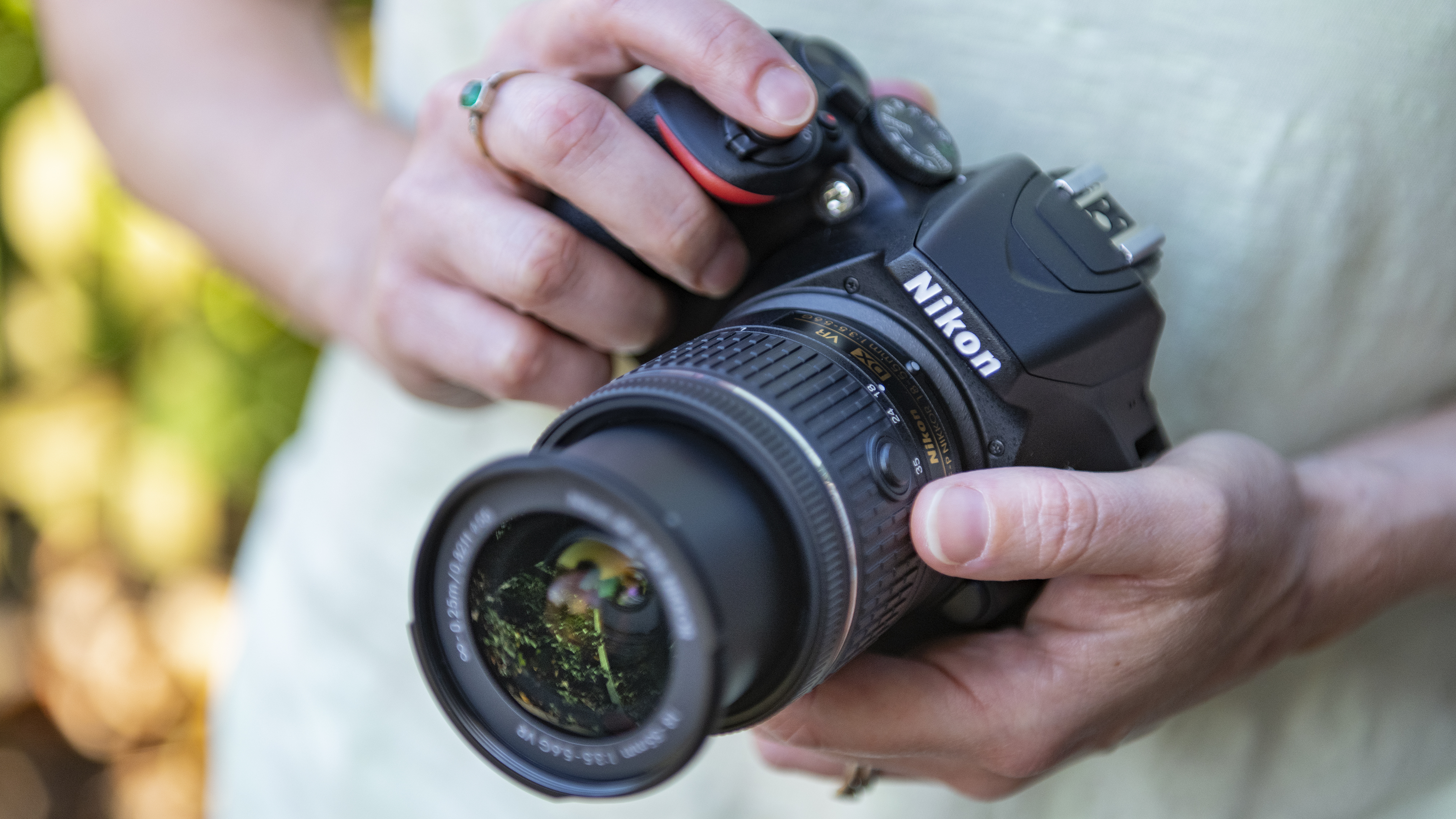
So impressively affordable yet full of helpful features, there’s a reason we still rate the Nikon D3500 as the best beginner DSLR you can buy. If you’re looking for a DSLR that will always be there when you want it, then the D3500 (and its 1,550-shot battery life) is one of the best around. For beginners, it also has a helpful Guide mode that'll save you from prying open a dog-eared, jargon-filled manual.
The deep grip on the camera body makes it a doddle to operate, even for smaller hands, and the D3500 has a wide range of native lenses to choose from for all kinds of photography. It does shoot video too, but only 1080p. The 3-inch, fixed screen is big and bright and an 11-point autofocusing system, while pretty dated by today's standards, is more than adequate for beginners.
It also has Bluetooth connectivity, allowing smart devices to connect and transfer files via SnapBridge, Nikon’s transfer software. It features Bluetooth Low Energy as well, which means that the connection is ‘always-on’ so your shots can be automatically transferred from camera to device.
- Read our in-depth Nikon D3500 review
Nikon D5600 (2016)
- Typical second-hand price ($600 / £450 / AU$700)

Another standout from Nikon’s entry-level DSLR range, the D5600 balances beginner-friendly usability with a feature set that gives you room to grow. In our Nikon D5600 review, we discovered a crop-sensor DSLR that's good for most styles of shooting, without particularly standing out in one area.
A 24.2MP APS-C image sensor is complemented by an articulating touchscreen, which is helpful for shooting from high or low angles. A 39-point autofocusing system means a good swathe of the frame is covered, but buyers should be aware that the D5600 is only capable of capturing 1080p video.
As one might expect at this price, the body is composed of a single piece of polycarbonate to retain strength and be as lightweight as possible. At 465g and measuring 124 x 97 x 70mm, it isn't the smallest DSLR in the world, but it’ll easily slip into a camera bag sling.
- Read our in-depth Nikon D5600 review
Canon EOS Rebel SL3 / 250D
- Typical second-hand price ($650 / £500 / AU$750)
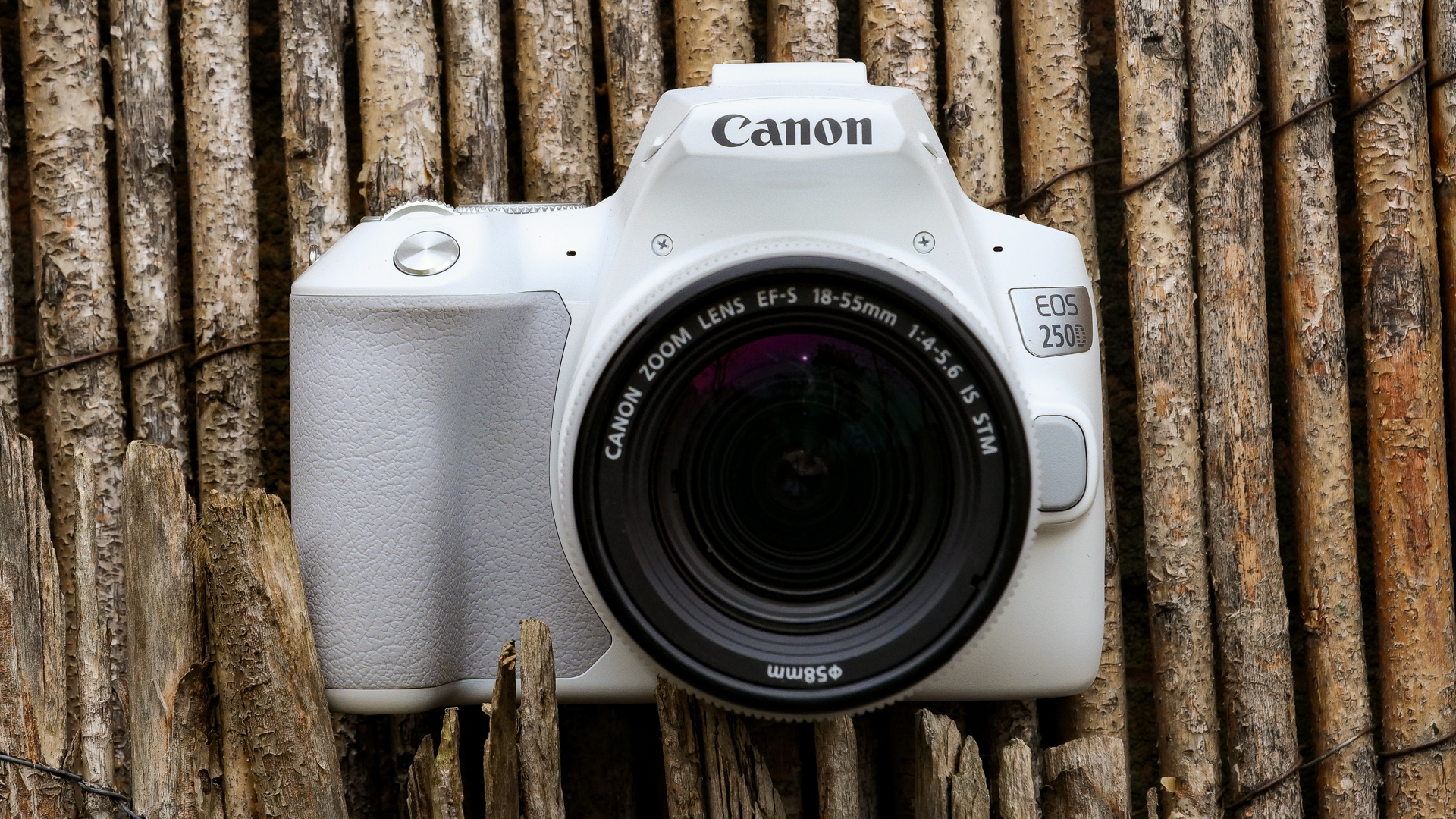
Weighing in at 449g, the world’s lightest DSLR is also one of the prettiest, with wide-set features and a squat, chunky design. The grip feels deep and suits both adults and younger children alike. It even has a vari-angle touchscreen to make changing camera settings a doddle.
Similar to the Nikon D3500, the EOS Rebel SL3 (called the 250D outside the US) features a Guided UI mode that helps describe menu screens with simple terminology and icons. There’s a Creative Assist mode too that gives photographers the option of using in-camera visual effects to produce images like grainy black and white, fish-eye, soft focus and more. This is helpful for beginners who want to concentrate on the picture taking, rather than burden themselves with learning image editing at the same time.
There’s only a 9-point autofocusing system here, but they do at least all run off phase-detection tech for better accuracy. Wi-Fi and Bluetooth connectivity come as standard for remote triggering and file transfer, and there’s an expandable ISO sensitivity from 25,600 to 51,200 for emergency shots in the dark.
- Read our in-depth Canon EOS Rebel SL3 / EOS 250D review
Canon EOS 80D (2016)
- Typical second-hand price ($600 / £570 / AU$850)

Like the more affordable 750D and 760D, the Canon EOS 80D shoots 24MP photos. But the 80D also crucially packs a Dual Pixel CMOS AF sensor for superior autofocusing, and has a superior metering system that helps the AF system track moving subjects.
For video shooters who want to record in 4K resolution, this camera is likely one to skip as it only record 1080p video. However, it does do this at 50fps, which can help with you slow down the footage when editing.
One appeal to the 80D is that it has Wi-Fi connectivity and NFC technology built-in, making it simpler to trigger the camera and transfer images to smart devices from a distance, without the need for a remote shutter release. A maximum burst speed of 7fps is actually the same as its predecessor, the 70D, but the buffer is much bigger, with the 80D capable of shooting up to 110 JPEGS or 25 raw files consecutively.
- Read our in-depth Canon EOS 80D review
Nikon D750 (2014)
- Typical second-hand price ($700 / £600 / AU$1600)
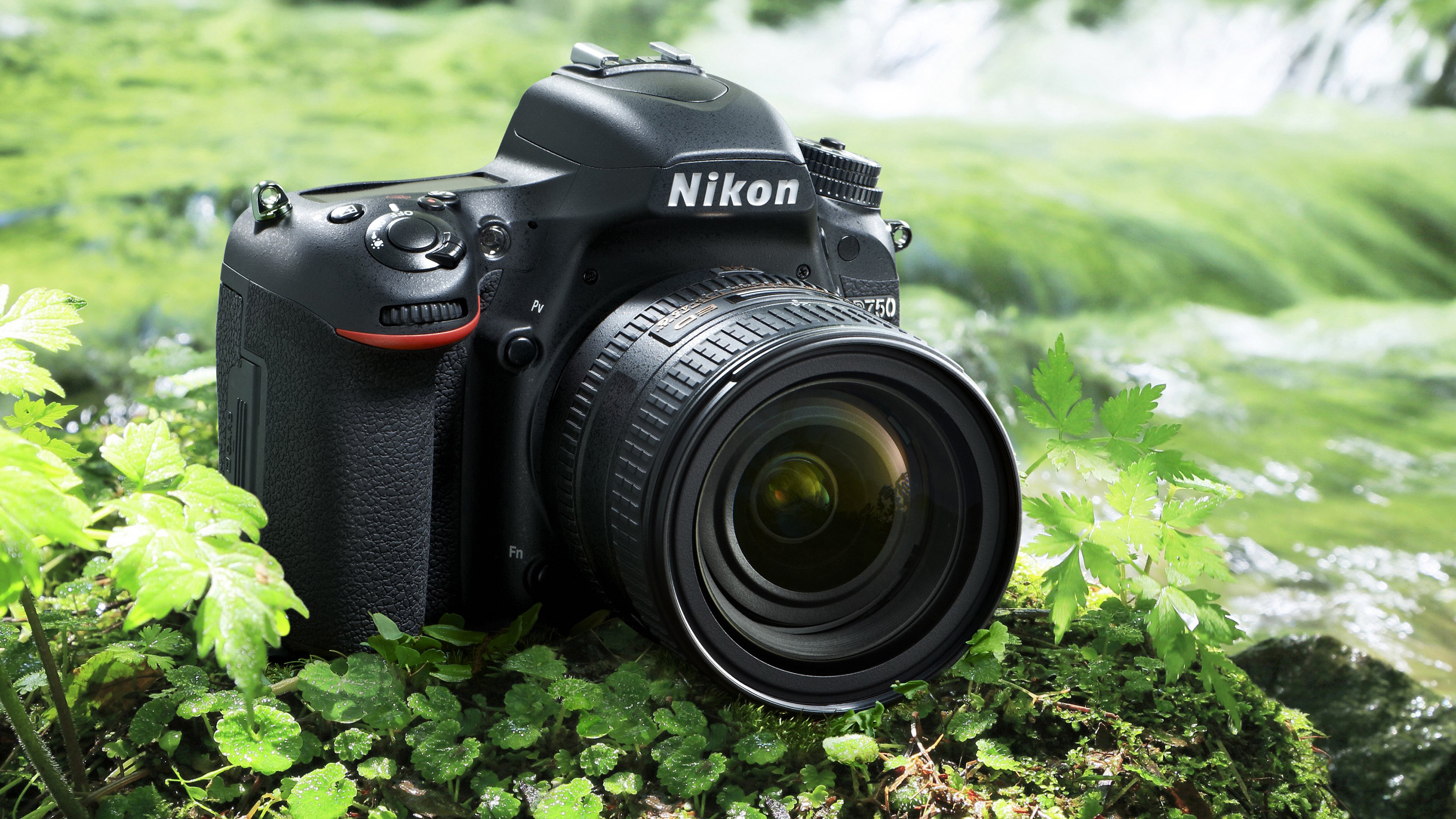
The perfect all-rounder, the full-frame D750 is great for weddings or astrophotography – in fact, it’s difficult to find something the D750 isn’t good at. Originally a bridge between the very basic entry-level models and Nikon’s professional range, this streamlined full-frame DSLR is perfect for beginners who are aiming to make photography a long-term hobby.
Though it’s now eight years old, the D750 can still keep up with the young kids on the block when it comes to image quality. We've found it to be excellent at handling high ISO noise with uniform grain across the frame, including highlights and dark shadows. Pair the D750 with some fast Nikon f-mount glass and it becomes a bit of a photographic chameleon.
It also lets you capture the darkest night skies with ease, performing better than its bigger brothers the Nikon D810 and D850 here, and is just as happy shooting a wedding in an old, dimly lit church. A resolution of 24.3MP is enough for most people, but videographers should be aware it only shoots 1080/50p video.
- Read our in-depth Nikon D750 review
Alternatively...
While DSLRs still offer the best big bang for your buck, sometimes the compact size and modern shooting experience of the best mirrorless cameras can make them a better choice for some photographers. If that's you, here's an alternative second-hand mirrorless option to consider...
Olympus OM-D E-M1 Mark III (2020)
- Typical second-hand price ($1,100 / £1,000 / AU$2,400)
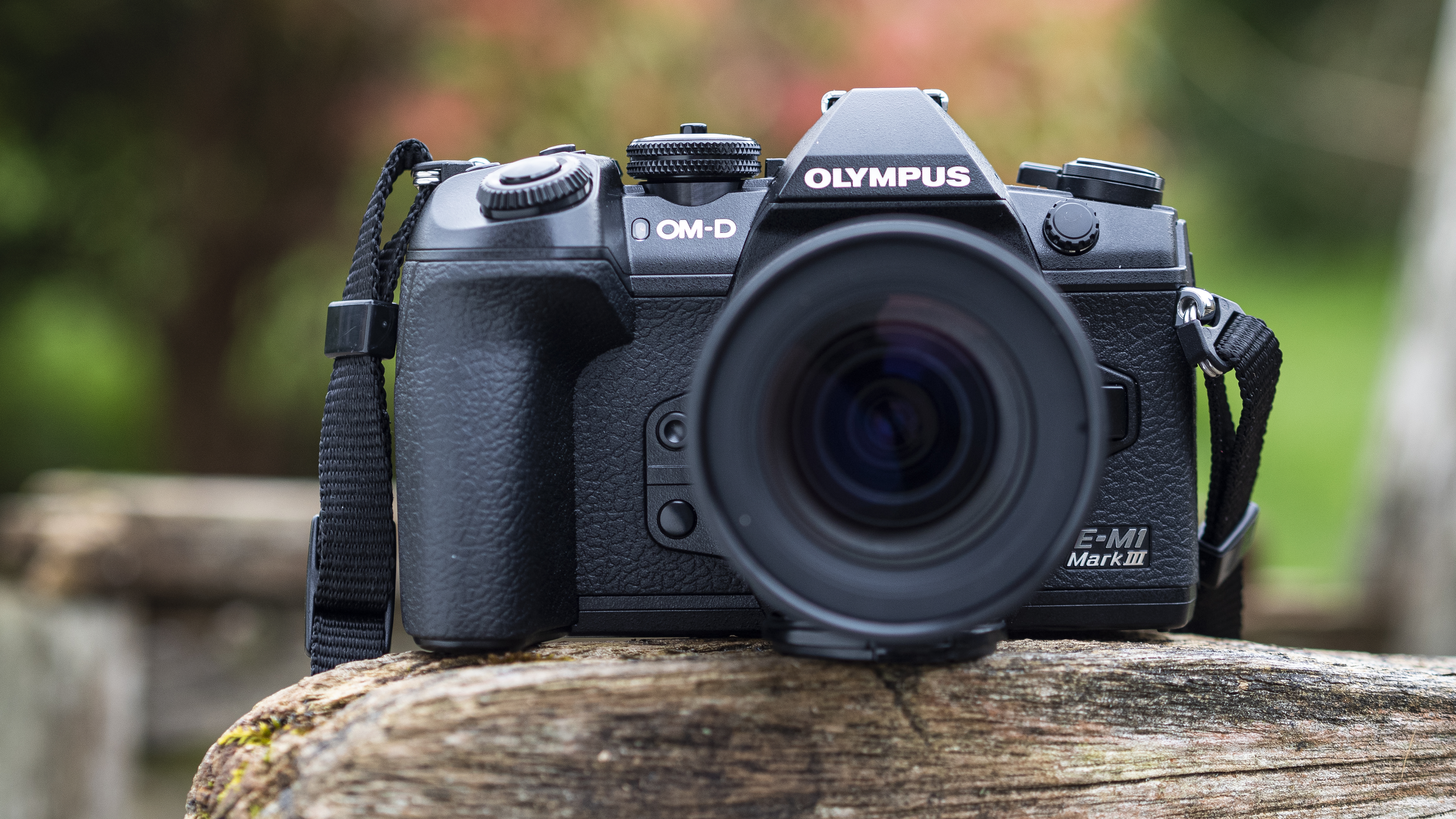
The OM-D E-M1 Mark III is a small and compact Micro Four Thirds camera that keeps up with the big boys of the DSLR world. Thanks to its magnesium-alloy body construction and weather-sealing, which help keep water and dust out of the camera, it’s built to last for professionals and hobbyists alike. Olympus also says it's capable of handling up to 400,000 shutter actuations, so even if you spot this second-hand gem with a couple hundred thousand on the clock you’re still only half way through its lifetime.
The articulated screen and joystick for repositioning autofocus make it a breeze to use. It’s also versatile when shooting handheld as well thanks to the 7.5-stops of image stabilization, which you get when the 5-axis in-body image stabilization (IBIS) is paired with a compatible lens. This means you don't have to rely in tripods quite as much, which is ideal for the beginner photographer.
- Read our in-depth Olympus OM-D E-M1 Mark III review